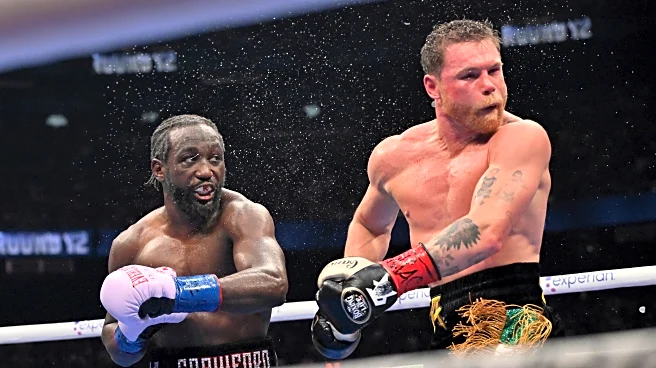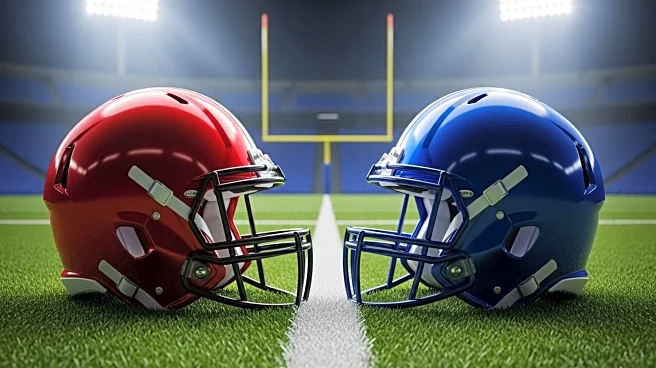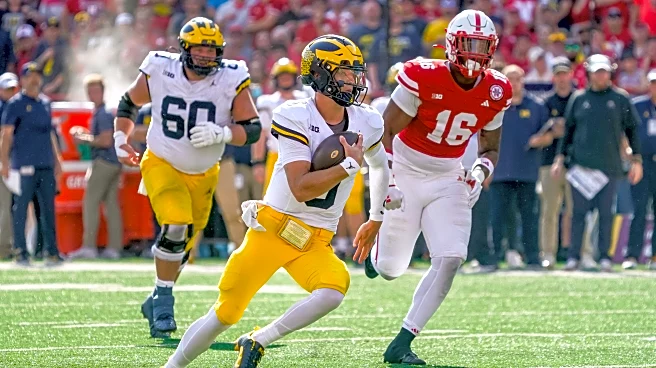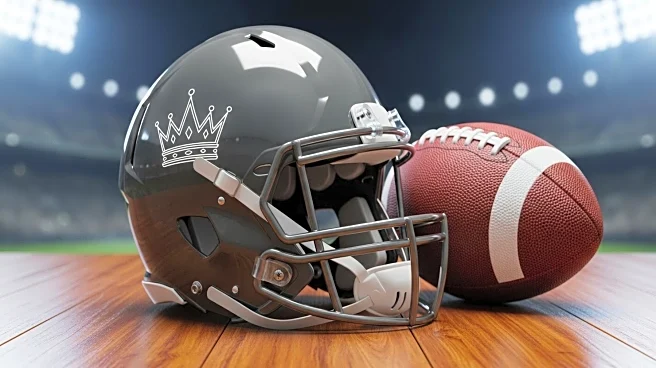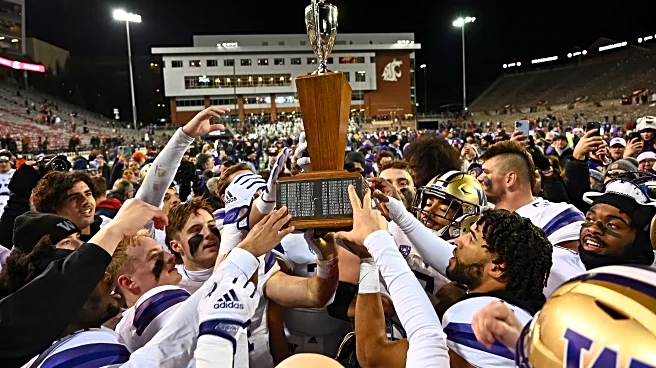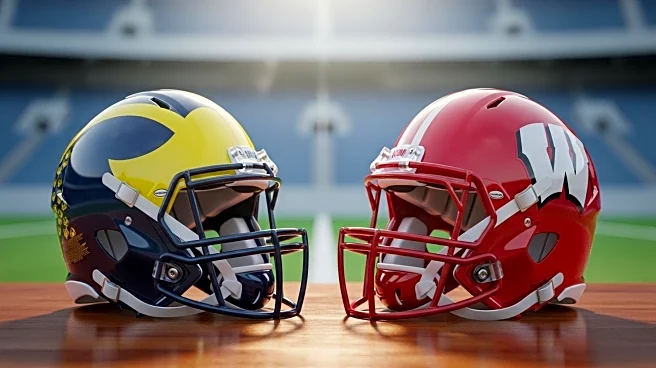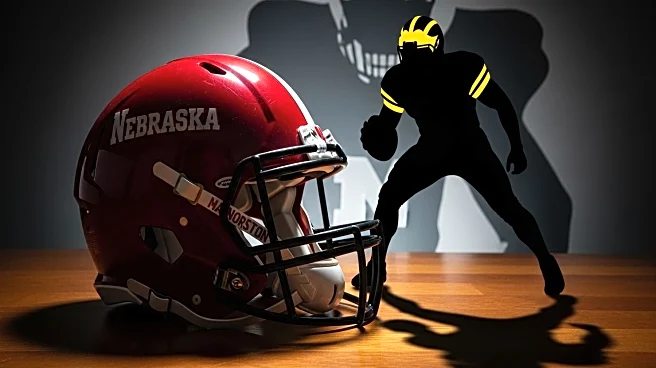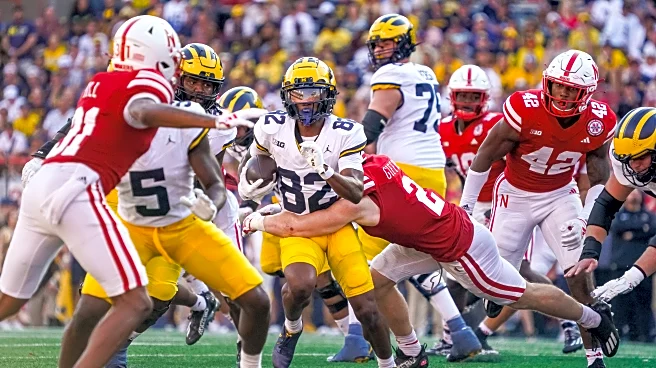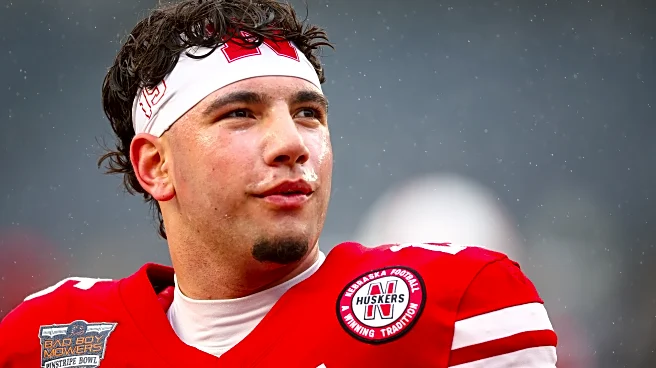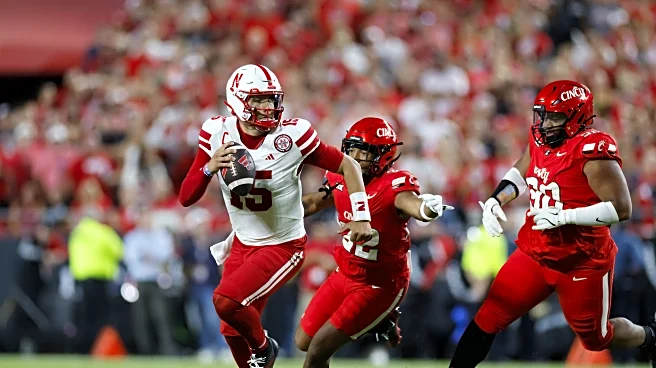What's Happening?
Terence 'Bud' Crawford, a renowned boxer from Omaha, Nebraska, recently made history by becoming the first male boxer to win three unified division titles. Following his victory over Canelo Alvarez, Crawford led the Nebraska Cornhuskers football team out of the tunnel before their game against No. 21 Michigan. Crawford, a lifelong fan of the Cornhuskers, wore a Nebraska baseball cap and a red jersey with the number 168, symbolizing his championship in the 168-pound division. His presence at the game highlights his close relationship with Nebraska's coach, Matt Rhule, and his support for the team. Crawford's recent achievements have garnered significant attention, and a parade celebrating his victory is scheduled to take place in downtown Omaha next Saturday.
Why It's Important?
Crawford's involvement with the Nebraska football team underscores the intersection of sports and community pride. His achievements in boxing bring national attention to Nebraska, enhancing the state's reputation in the sports world. Crawford's support for the Cornhuskers also boosts morale and fosters a sense of unity among fans and players. The upcoming parade in Omaha is expected to draw significant crowds, celebrating not only Crawford's boxing success but also his role as a local sports icon. This event highlights the positive impact of sports figures on local communities, inspiring young athletes and promoting regional pride.
What's Next?
The parade in Omaha will serve as a major celebration of Crawford's accomplishments, likely attracting fans from across the state. This event may further solidify Crawford's status as a local hero and could lead to increased interest in boxing and sports in Nebraska. Additionally, Crawford's continued involvement with the Cornhuskers may inspire other athletes to engage with their communities, fostering stronger ties between sports and local culture.
Beyond the Headlines
Crawford's achievements and his support for Nebraska's football team highlight the broader cultural significance of sports figures in American society. His role as a community leader exemplifies how athletes can influence and inspire beyond their professional careers. This development may encourage discussions on the role of sports in community building and the potential for athletes to serve as ambassadors for their hometowns.

